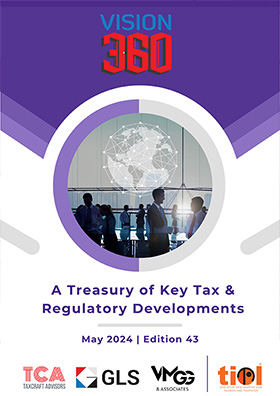CENVAT Credit - Avail now or never?
JULY 16, 2014
By Amit Kumar Fitkariwal, & S Srujan Kumar, Deloitte Touche Tohmatsu India Private Limited
THE CENVAT credit provisions are already fraught with complication. The issue of nexus and eligibility of credit have over a long period of time significantly affected the cash outflows of the assessee. With the amendment made in the CENVAT Credit Rules, 2004 in the current budget proposals, another restriction has been added to the already complicated framework.
Earlier, an assessee eligible to avail CENVATcredit on inputs and input service in terms of Rule 3 of the CENVAT Credit Rules, 2004, was eligible to avail such credit at any time after receipt of the inputs in the factory and upon possession of the appropriate documents like invoice, challans, etc., and utilize the same for the payment of the output liability of excise and service tax. However, on the practical front, a number of internal procedures and compliances are to be completed by the assesse between receipt of an invoice and accounting and final payment of the invoice to the vendor. In such scenario, there is always a considerable time gap from the date of receipt of the invoice and the actual date on which credit of the same is availed. Sometimes, it so happens that the invoices are not immediately accounted on account of dispute with the vendor resulting in taking of the credit much later then the date of invoice. Further, the service tax assesse having obtained the centralized registration also face delays in compiling the CENVAT details on input services resulting in delay in taking credit. Another case could be where demand of duty/service tax for the past periods are claimed by the department and in such a case the assessee could claim “revenue neutrality” or set off of eligible duty credits against such demands.
Further, even if in cases where the credit has been taken on input service upon receipt of the invoice, if an assessee fails to make payment to the vendor within a period of three months from the date of invoice, the assessee would be required in terms of Rule 4(7) of the existing rules to reverse so much of the credit pertaining to the said invoice and re-take credit of the same at such later date when the requisite payment is made to the vendor.
Vide Notification No. 21/2014 – CE(NT) dated 11.07.2014, an additional condition is proposed in the CENVAT credit Rules wherein, an assessee shall not be able to avail Cenvat credit after six months from the date of invoice .Now in the current scenario, when a maximum limit of six months is fixed beyond which an assessee will have to forego credit, it creates an additional burden on the taxpayer.
In such scenario, an assessee though having duly availed the credit on input services upon receipt of the invoice which is well within six months from the date of such invoice, and later having reversed the same upon non-payment within three months from the date of invoice, would not be able to avail the re-credit if the payment to the vendor is made after sixmonths from the date of the invoice. By proposing to include the additional condition, the Central government is fixing an additional obligation on the assessee to make all payments to vendors within six months failing which they would lose the benefit on Cenvat.
The said provisions seems to be out of sync with business realities considering the fact that that the manufacturer of such inputs or service provider would have discharged their liability based on the removal of inputs from the factory or provision of service, as the case may be. In such case, the Government has on the one hand collected the liability from the manufacturer of such inputs or service provider for input services and on the other hand by denying the credit beyond six months enriched itself at the cost of the assesse.
Even if the said provision is seen from the prism of checking tax evasion, there are already several other provisions imposing penalty including imprisonment in case of false issuance of the CENVATABLE invoice and availing of credit on such invoices. Further, reversal of Cenvat credit on input services in case of non-payment of invoice beyond the period of three months already is a check on issuance of invoice on accommodation basis.
It would also be pertinent to note that there are various other provisions under the Indirect Tax laws providing rebate or refund of the duty/service tax paid in case of export wherein the claimant can claim rebate/refund within one year from the date of export/payment of tax. Such rebate/refund, for example,refunds to SEZ units or refund to exporter of goods towards specified services used beyond the place of removal is not governed by the provisions of CENVAT Credit Rules. When compared with the proposed restriction of claiming the credit within six months from the date of invoice, the same puts the assessee in disadvantageous position. In such scenario, adding an additional condition to avail CENVAT within six monthsis an unfair advantage to such units which need not comply with the provisions of CENVAT Credit Rules, 2004. To provide a level-playing field to all players of the industry, the time limit should have been atleast one year as against the proposed time limitof six months.
The proposed provision effective from 1st September, 2014 would prove to be a draconian one causing undue hardship to the assessee in the already cash-crunched economy .














